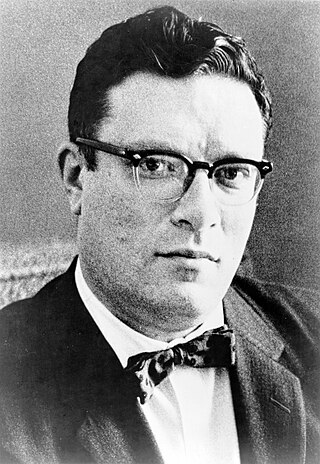
Isaac Asimov was an American writer and professor of biochemistry at Boston University. During his lifetime, Asimov was considered one of the "Big Three" science fiction writers, along with Robert A. Heinlein and Arthur C. Clarke. A prolific writer, he wrote or edited more than 500 books. He also wrote an estimated 90,000 letters and postcards. Best known for his hard science fiction, Asimov also wrote mysteries and fantasy, as well as popular science and other non-fiction.
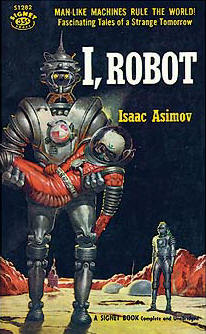
The Three Laws of Robotics are a set of rules devised by science fiction author Isaac Asimov, which were to be followed by robots in several of his stories. The rules were introduced in his 1942 short story "Runaround", although similar restrictions had been implied in earlier stories.
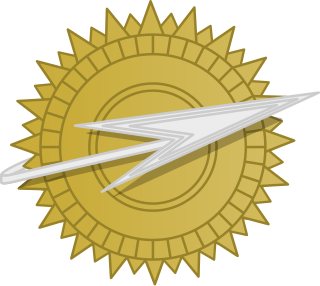
The Galactic Empire is an interstellar empire featured in Isaac Asimov's Robot, Galactic Empire, and Foundation series. The Empire is spread across the Milky Way galaxy and consists of almost 25 million planets settled exclusively by humans. For over 12 millennia the seat of imperial authority was located on the ecumenopolis of Trantor, whose population exceeded 40 billion, until it was sacked in the year 12,328. The official symbol of the empire is the Spaceship-and-Sun. Cleon II was the last Emperor to hold significant authority. The fall of the empire, modelled on the fall of the Roman Empire, is the subject of many of Asimov's novels.
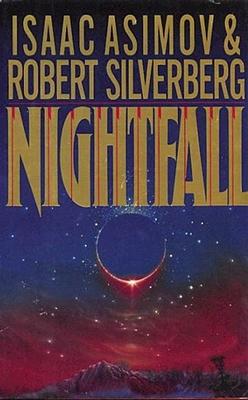
"Nightfall" is a 1941 science fiction short story by the American writer Isaac Asimov about the coming of darkness to the people of a planet ordinarily illuminated by sunlight at all times. It was adapted into a novel with Robert Silverberg in 1990. The short story has appeared in many anthologies and six collections of Asimov stories. In 1968, the Science Fiction Writers of America voted "Nightfall" the best science fiction short story written prior to the 1965 establishment of the Nebula Awards and included it in The Science Fiction Hall of Fame, Volume One, 1929–1964.

Quasar, Quasar, Burning Bright is a collection of seventeen scientific essays by American writer and scientist Isaac Asimov. It was the thirteenth of a series of books collecting essays from The Magazine of Fantasy and Science Fiction. These essays were first published between May 1976 and September 1977. It was first published by Doubleday & Company in 1978. Its title is derived from the first line of William Blake's 1794 poem "The Tyger".
The Black Widowers is a fictional men-only dining club created by Isaac Asimov for a series of sixty-six mystery stories that he started writing in 1971. Most of the stories were first published in Ellery Queen's Mystery Magazine, though a few first appeared in Fantasy & Science Fiction, Isaac Asimov's Science Fiction Magazine, and the various book collections into which the stories were eventually gathered.
This is a list of short stories by American writer Isaac Asimov. Asimov is principally known for his science fiction, but he also wrote mystery and fantasy stories.
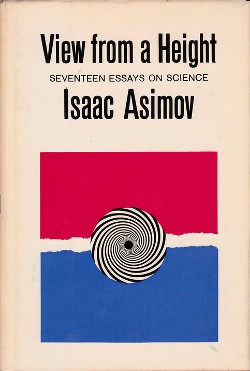
View from a Height is a collection of seventeen scientific essays by American writer and scientist Isaac Asimov. It was the second of a series of books collecting essays from The Magazine of Fantasy and Science Fiction, written between 1959 and 1962. It was first published by Doubleday & Company in 1963. The book received a review in Science Magazine. and The American Biology Teacher.
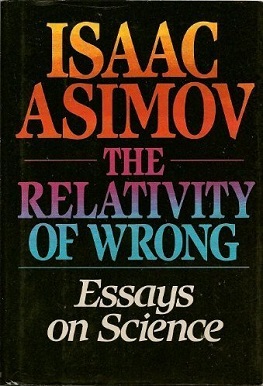
The Relativity of Wrong is a 1988 collection of seventeen essays on science by American writer and scientist Isaac Asimov. The book explores and contrasts the viewpoint that "all theories are proven wrong in time", arguing that there exist degrees of wrongness.
The Trap Door Spiders are a literary, male-only eating, drinking, and arguing society in New York City, with a membership historically composed of notable science fiction personalities. The name is a reference to the reclusive habits of the trapdoor spider, which when it enters its burrow pulls the hatch shut behind it.

The Subatomic Monster (1985) is a collection of seventeen nonfiction science essays by American writer and scientist Isaac Asimov. It was the eighteenth of a series of books collecting essays from The Magazine of Fantasy and Science Fiction, these being first published between June 1983 and October 1984. It was first published by Doubleday & Company in 1985.

Fact and Fancy is a collection of seventeen scientific essays by American writer and scientist Isaac Asimov. It was the first in a series of books collecting his essays from The Magazine of Fantasy and Science Fiction, and Asimov's second book of science essays altogether. Doubleday & Company first published it in March 1962. It was also published in paperback by Pyramid Books as part of The Worlds of Science series.

Adding a Dimension is a collection of seventeen scientific essays by American writer and scientist Isaac Asimov. It was the third of a series of books collecting essays from The Magazine of Fantasy and Science Fiction. It was first published by Doubleday & Company in 1964.
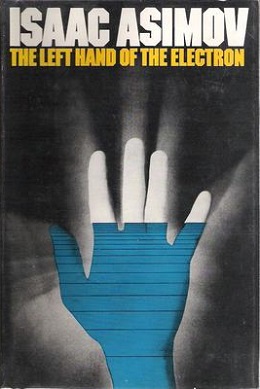
The Left Hand of the Electron is a collection of seventeen nonfiction science essays by American writer and scientist Isaac Asimov, first published by Doubleday & Company in 1972. It was the ninth of a series of books collecting essays from The Magazine of Fantasy and Science Fiction. The title comes from the topic of the first section which deals with chirality of electroweak interactions and chirality of organic compounds and the possible connection between the two. Other essays in this book concern the effect of electron-spin direction on molecular structure e.g. the "Inverse Sugar" in honey with philosophical reflections on the minority of left handedness in general.

The Sun Shines Bright is a collection of seventeen nonfiction science essays by American writer and scientist Isaac Asimov. It was the fifteenth of a series of books collecting essays from The Magazine of Fantasy and Science Fiction. It was first published by Doubleday & Company in 1981.

Counting the Eons is a collection of seventeen nonfiction science essays written by Isaac Asimov. It was the sixteenth of a series of books collecting essays from The Magazine of Fantasy and Science Fiction, these being first published between August 1980 and December 1981. It was first published by Doubleday & Company in 1983.

The Road to Infinity is a collection of seventeen scientific essays by American writer and scientist Isaac Asimov. It was the fourteenth of a series of books collecting Asimov's science essays from The Magazine of Fantasy and Science Fiction. It also included a list of all of Asimov's essays in that magazine up to 1979. It was first published by Doubleday & Company in 1979.
In a writing career spanning 53 years (1939–1992), science fiction and popular science author Isaac Asimov (1920–1992) wrote and published 40 novels, 383 short stories, over 280 non-fiction books, and edited about 147 others.
Isaac Asimov wrote three volumes of autobiography. In Memory Yet Green (1979) and In Joy Still Felt (1980) were a two-volume work, covering his life up to 1978. The third volume, I. Asimov: A Memoir (1994), published after his death, was not a sequel but a new work which covered his whole life. This third book won a Hugo Award.
Depending on the counting convention used, and including all titles, charts, and edited collections, there may be currently over 500 books in Isaac Asimov's bibliography—as well as his individual short stories, individual essays, and criticism. For his 100th, 200th, and 300th books, Asimov published Opus 100 (1969), Opus 200 (1979), and Opus 300 (1984), celebrating his writing.














